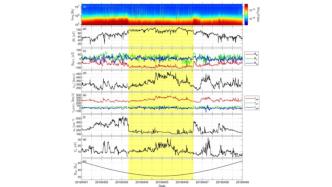
Solar wind acceleration and coronal heating are difficult problems in the field of solar physics. The main difficulty lies in the lack of effective astrophysical diagnostic methods for the high-temperature, thin and fully ionized coronal plasma, especially the "meta-process" of collective plasma interactions at the particle dynamics scale. According to the radiation dynamics spectrum, solar radio radiation can be divided into many different types, reflecting the differences in atmospheric environment and physical mechanisms in the radiation source area. For example, type III radio bursts are characterized by rapid frequency drift and type II radio bursts have relatively slow frequency drift.
Recently, researchers at the Purple Mountain Observatory of the Chinese Academy of Sciences used the close-solar observation data of the radio spectrum instrument on the Parker Solar Probe to discover a new type of solar radio burst that is significantly different from Type II and Type III radio storms - solar solitary waves. radiation. The discovery of a new type of small-scale solar solitary wave radiation is a new development in the field of solar radio research and is expected to provide powerful information for exploring the coronal heating and solar wind acceleration, especially the "element process" of the solar atmospheric magnetic plasma activity on the particle dynamics scale. New detection and diagnosis methods. At the same time, the study of different types of solar radio radiation has important scientific significance for revealing the radiation mechanism, and can provide effective observation and diagnosis methods for the study of various solar activity phenomena and dynamic processes in different environments. Relevant research results were published in The Astrophysical Journal.